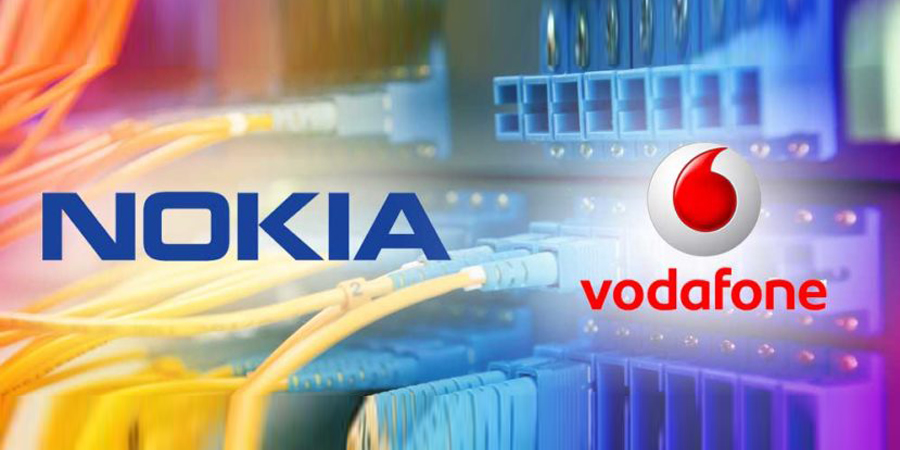Nokia and Vodafone have announced the successful trial of a new Passive Optical Network (PON) technology capable of delivering speeds up to 100 gigabits per second (Gb/s) on a single wavelength 10 times faster than the most advanced networks available today. This marks the latest industry-first in fiber access for Nokia, following breakthroughs in 10G PON, TWDM-PON, universal PON and 25G PON.
The trial, which took place in Vodafone’s Eschborn lab in Germany last week, is the latest milestone in a long-standing collaboration between Vodafone and Nokia to accelerate the potential of fiber broadband. The demand for broadband connectivity continues to grow exponentially in terms of the service types, number of connected devices and the bandwidth consumed. It is essential that future fixed access networks have the capacity to absorb this growth.
To deliver 100 Gb/s on a single wavelength, Nokia Bell Labs leveraged cost-effective 25G optics in combination with state-of-the-art digital signal processing (DSP) techniques. 25G class optics are based on mature eco-system and available today. Going beyond 25G requires advanced DSP capabilities demonstrated in this trial. Once this DSP is adopted, the steps to 50G and 100G are straightforward and could be commercially available in the second half of the decade.
The Nokia Bell Labs 100G PON prototype is the world’s first application of flexible rate transmission in a PON network. Flexible rate transmission works by grouping fiber modems (ONUs) that exhibit similar physical network characteristics (e.g. loss or dispersion) and makes data transmission more efficient. Using flexible rate transmission results in lower latency on a PON and cuts power consumption in half — two essential characteristics for fiber networks that have a rapidly growing role in the massive delivery of fixed and mobile broadband services.
Vodafone has a history of pioneering state-of-the-art access technologies, having been the first operator in Europe to trial TWDM-PON, also with Nokia. The operator has the largest next-generation access network capability in Europe, covering 140 million homes. Vodafone’s strategy is to push fiber deeper to customers and evolve to a unified fiber-based network for access, aggregation, backhaul of cable nodes and mobile transport. Vodafone see 100G PON as a potential way to create highly flexible and scalable PON networks that will mitigate the risk of future peak-hour congestion and enable densification of cable and mobile networks.
Gavin Young, Vodafone’s Head of Fixed Access Centre of Excellence, said, “100G PON has 40 times the capacity of today’s GPON networks, and 10 times the capacity of XGS-GPON, so it will help us keep ahead of the demand curve. In addition to ultra-high speeds, the technology supports our vision of highly efficient and adaptable next-generation networks. 100G PON enables flexible rates, and works by grouping modems using a technique similar to the one we already use in our cable networks, so this experience can help us to better evaluate and exploit this new PON technology.”
Stefaan Vanhastel, Chief Technology Officer, Fixed Networks Division, Nokia, said, “We keep pushing the potential of fiber access so that capacity stays ahead of the unrelenting demand of the connected world. In 2020, we launched the first commercial 25G PON solution. Now, we’re delighted to show state-of-the-art 100G technology together with Vodafone. These breakthroughs in speed turn an existing fiber-to-the-home network into a fiber network that can connect homes, businesses, remote cable nodes and 5G small cells.”
Peter Vetter, Head of Access and Devices Research, Nokia Bell Labs, said, “Nokia Bell Labs is focused on delivering the innovative technologies needed for the flexible, adaptable networks of the future. Optical innovations pioneered by Nokia Bell Labs, like shaping, are widely adopted by the industry. For the first time, we show a unique flexible rate capability that allows optimizing capacity depending on the link losses and low-cost optical component capabilities in an optical network termination. We believe fiber will play a key role in 5G and 6G, and that is why we are truly excited about the 100G PON demo, and its potential in creating the future of fibre broadband.“










